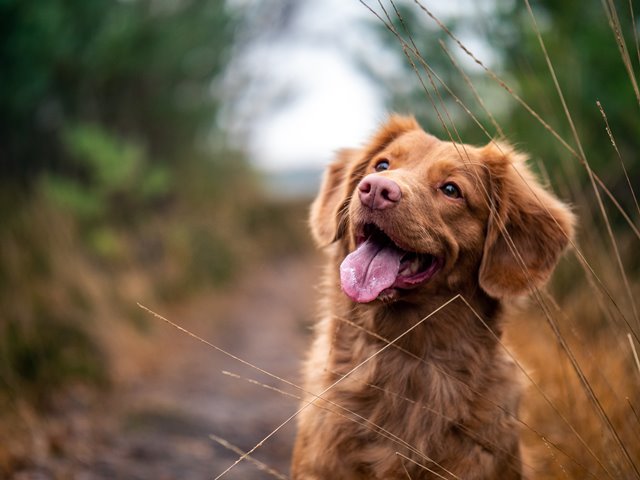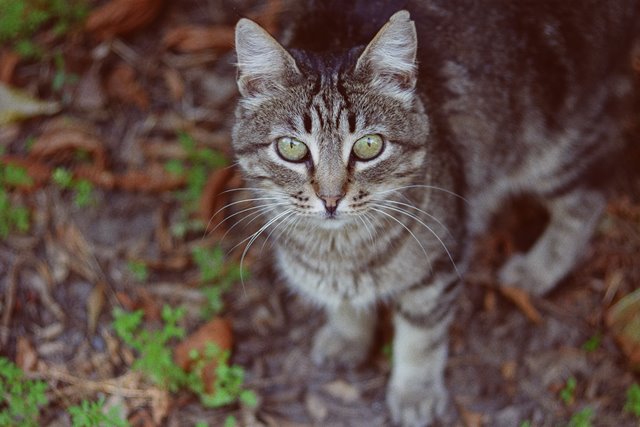Emergency Care: Stings and Bites in the UK

As we move into summer and the weather improves, we start to see more insects and creepy crawlies out and about, and like us humans, dogs and cats can also be affected by nasty bites and stings!
Dogs and cats can be particularly prone to insect bites if they disturb a nest or if they are trying to chase/play with any of these stinging insects. The warmer weather also brings snakes out to bask in the sun. There are only two types of snake native to the UK: grass snakes and adders. Both are shy and only likely to bite in self-defence if they are disturbed. Adders live in heathland, open woodland and rough grasslandwhereas grass snakes are more likely to be found in open woodland, the edges of fields and near water.
Insect stings
The severity of a wasp, bee or hornet sting depends on the location of the sting and the animal’s innate reaction. Insects tend to sting the part of the animal which they first come into contact with – this may be the feet if the animal trots into a nest, but often it may be the nose/ muzzle which has been investigating the insect or trying to catch it, thinking it’s a game!
Stings to the leg may cause some local swelling, which may be irritating or painful, but so long as there is no systemic reaction, the animal is likely to recover with no issues.
Insect stings tend to be more dangerous if they are on the face or in the mouth as they can cause facial swelling which may obstruct breathing. The real danger comes when an animal has an anaphylactic (severe allergic) reaction to an insect bite. At its most extreme this may result in swelling of the face and airways, causing a respiratory obstruction with potential for suffocation, and even life-threatening shock, where many organs may be affected.
What you may notice if your animal has been stung:
- You may have seen them playing with the insect in the first place and witnessed the incident
- You may hear a yelp when the bite occurs, or see them pawing at their face, nibbling at a foot or becoming agitated
- You may see a red, raised area where the bite occurred
- You may notice the animal come up in hives (small raised lesions all over the body)
- They may start excessively drooling, or even vomiting*
- You may notice facial swelling *
- You may notice a change in their breathing*
*Seek veterinary attention as soon as possible if these signs are seen
What to do if you think your pet may have been stung
- If there is a change in their breathing or swelling to their face, get them to the vets immediately. (If possible, call your vet to let them know to expect you.)
- If you can see the sting, gently try to scrape it out using a credit card, edge of a postcard or something similar, or pull it out below the poison sac. Do not squeeze the sac however as this could introduce more of the poison into the site of the sting.
- Bathe the area in water
- Gently applying ice will help to soothe the sting.
- If your pet seems fine in themselves, with no facial swelling or alteration to their breathing, you may be able to contact your vet for an appropriate dose of anti-histamine to reduce the reaction, however, allergic reactions can occasionally be delayed so it is important to monitor them closely for the remainder of the day
- Do not administer any anti-histamine without first contacting your vet practice for advice as to next steps.
- Reduce the ability for your pet to scratch or chew at the site of the sting – e.g. use a protective/recovery collar for a day or so to prevent them from rubbing their muzzle, chewing paws, etc and exacerbating the inflammation
- Keep the animal calm and ensure they have plenty of access to water
Tips to avoid insect stings
- Clear away any known nests
- Discourage playing with insects – distract them with other games

Snake bites
Please note this article refers to common species seen in the UK only and does not include more venomous insects and snakes seen abroad.
As indicated above, there are only two types of snake native to the UK: grass snakes and adders. Both are shy and only likely to bite in self-defence if they are disturbed. Warmer weather brings them out to bask in the sun, so it is not unusual for an adventurous dog (or cat) to inadvertently stumble across one (or into one!).
While grass snakes can grow fairly large, they are not venomous, so a bite will not cause an allergic reaction, but could cause a nasty wound which may require veterinary attention. Adders, however, are venomous, and a bite may result in a serious anaphylactic reaction. As with insects, snakes tend to bite the part of the animal’s body which has disturbed them – so a bite to a foot or the nose is most common.
Again the severity of the bite can vary with the location of the bite, the depth of the bite and the animal’s response. Smaller animals may be worse affected.
If you think your pet has been bitten by a snake it is best to seek veterinary attention as soon as possible.
What you may notice if your animal has been bitten by a snake:
- You may hear them yelp following the bite
- You may see the two puncture marks of the fangs and localised swelling and redness around the bite
- Your pet may be lame, or reluctant for you to touch the affected leg/area
- Bruising may develop around the bite
- A systemic response may occur which may result in abnormal breathing, an abnormal heart rate and/ or rhythm, pale gums, disorientation, a wobbly gait, trembling or shaking, drooling, vomiting and even collapse.
What to do if you think your animal has been bitten by a snake:
- Keep calm. This is important so that you can travel safely to the vets while also trying to keep your animal calm. Most animals treated promptly will recover following an adder bite.
- If possible, carry your animal back to the car, to avoid their movement encouraging the spread of the venom.
- Bathe the bite site with cool water.
- Try and keep your animal calm and minimise their movement on the way to the vets.
- Ring your vets to let them know that you are on the way and provide an expected ETA.
Tips to avoid snake bites
- Know your local area and whether snakes are resident there.
- The summer months provide the highest risk for snake bites in the UK, so certain areas may be best avoided during these times.
- Avoid walking in the peak of the heat in summer, when snakes are most likely to be basking out.
- Avoid certain walks in summer if you know snakes are a particular problem in that area.
Following a discussion with your vet, you could consider keeping a dose of anti-histamine on your person in summer so that you can administer it immediately after a bite to try and reduce the chance of an allergic reaction. This must be discussed with your vet first to ensure that this would even be appropriate for your pet and that a suitable choice and dose of anti-histamine are selected.
For more information on emergency care take a look at our recent article on cuts and injuries!
News

